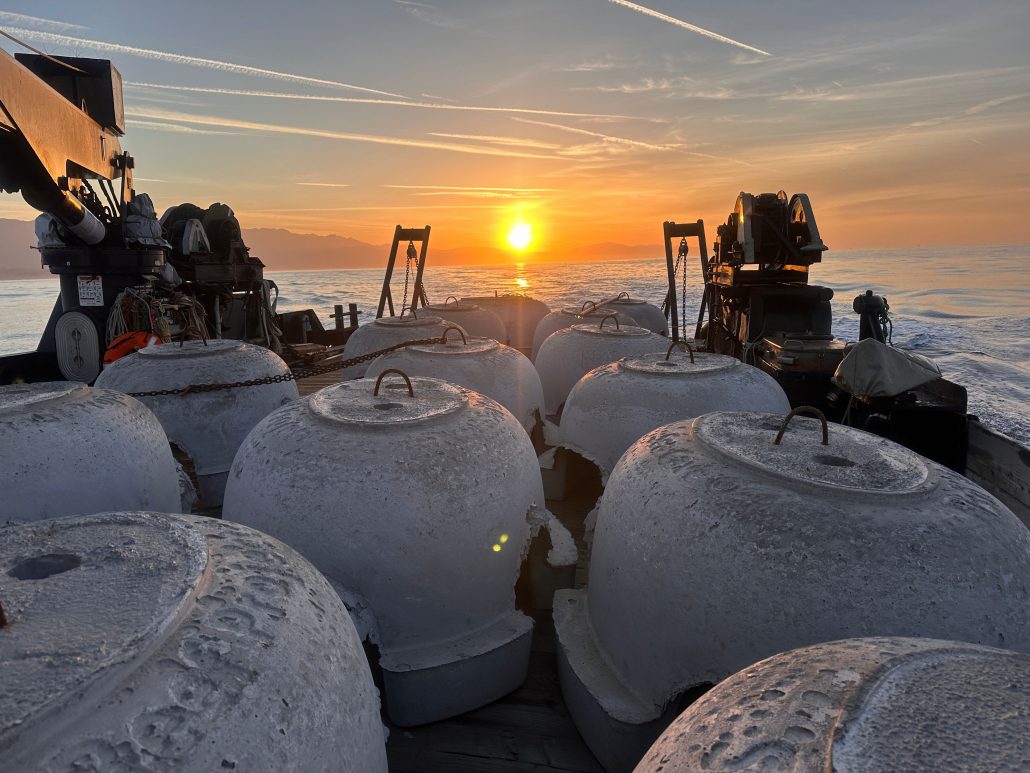New designed reef installed off the Goleta coast

GOLETA, Calif. – Just off the coast of Goleta, a chain of recently installed cement sea caves rests on the ocean floor, installed to reintroduce a kelp forest along the Central Coast of California.
According to the Fish Reef Project, this is California's first sea cave-based biogenic reef that uses the artificial sea caves pictured below to support and encourage the natural growth of kelp and a broader natural reef.

The 16 sea caves placed in the Goleta Bay this month are part of a 14-year endeavor to bring kelp forests that graced the shores of California for millennia, but are now much less common and for a variety of reasons.
The six-foot by four-foot by three-foot domed cement sea caves have a 500-year lifespan and weigh about 2400 pounds.
The Fish Reef Project, founded in 2011, explains that accumulated kelp placed strategically just offshore does more than restore historic kelp forests in the area.

The habitat restoration group details that restoring kelp forests offshore can protect habitats onshore, by creating a natural buffer and slowing beach degradation.

Kelp forests are also known to mitigate climate change and ocean acidification by storing notable quantities of carbon and localizing the production of oxygen.
Those restored natural buffers also create a thriving habitat for a variety of creatures, especially as a nursery for creatures at their most vulnerable stages of development.
The sea caves were installed in April to coincide with the reproductive process of existing kelp in the surrounding area.
Young kelp are expected to begin the sedentary portion of their life cycle using the sea caves in July of this year.

Installation teams used a custom hook that released upon successful delivery to a pre-approved 60-foot by 60-foot patch of sea floor.

This isn't the first artificial reef installation from the Fish Reef Project, which features projects from around the world with the following images taken from the already-installed project along the Baja Peninsula of Mexico.
The image below shows the early stages of kelp clinging to the surface of one of the cement sea caves.

The next two images show the mature column of natural kelp that can come to obscure their sea cave anchors.
The domed structures serve as an anchor for kelp, as a vital incubator and safe area for many creatures, as well as impacting the water column above as kelp reaches towards the water's surface.
Kelp grows towards the sun and remain aloft to sway in the water above using gas-filled bladders, or pneumatocysts.


Some of the creatures that rely on the safe harbor of the sea caves are spiny lobsters (pictured below) clustered in the relative safety of the sea caves.

Bottom-dwelling creatures are not the only ones that rely on reefs.
Larger species of fish depend on the reliable and concentrated source of nutrients that natural reefs, and in this case, human-created reefs, provide.

The images above and below not only show a variety of fish species, but the demonstrable impact of strategically arranging the sea caves in designated formations as well.

Last but certainly not least in this collage, is the dedicated staff of the Fish Reef Project celebrating the newest iteration of their sea cave concept right here along the Central Coast of California.

An informative YouTube video about the local project is available here.
For more information about efforts to protect marine environments up and down the California Coast, check out this interactive webpage about California's Marine Protected Areas.
